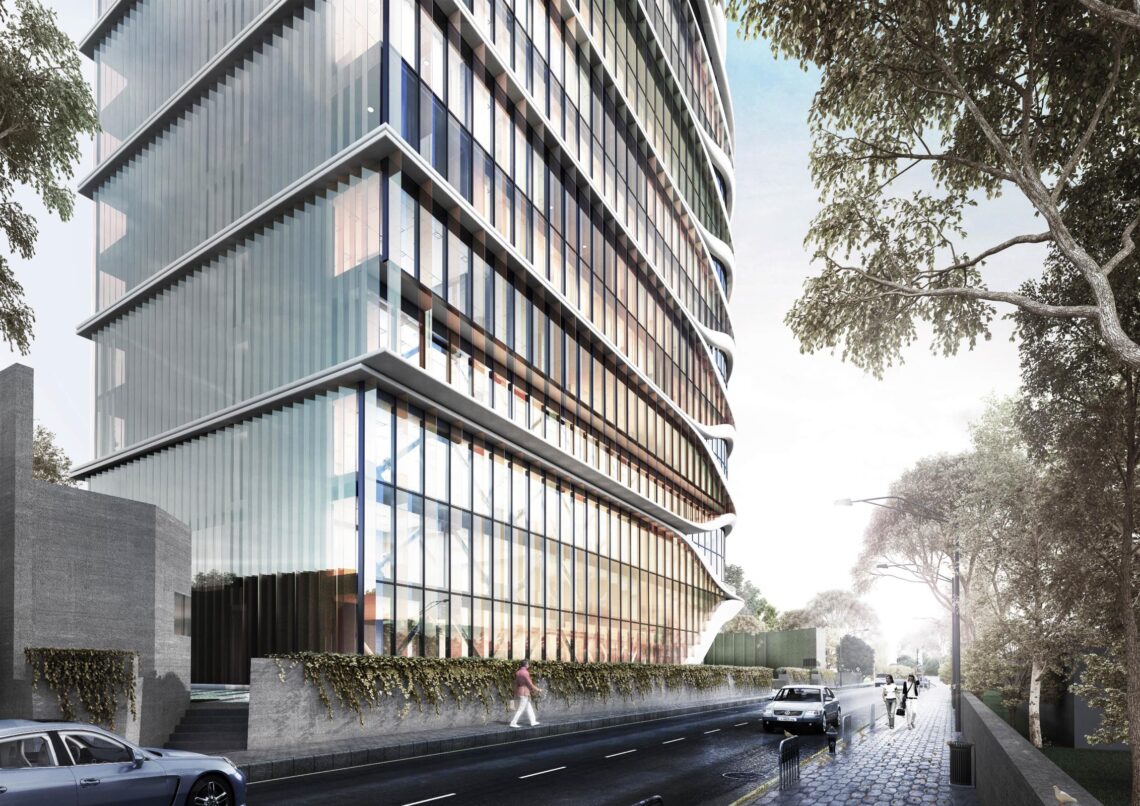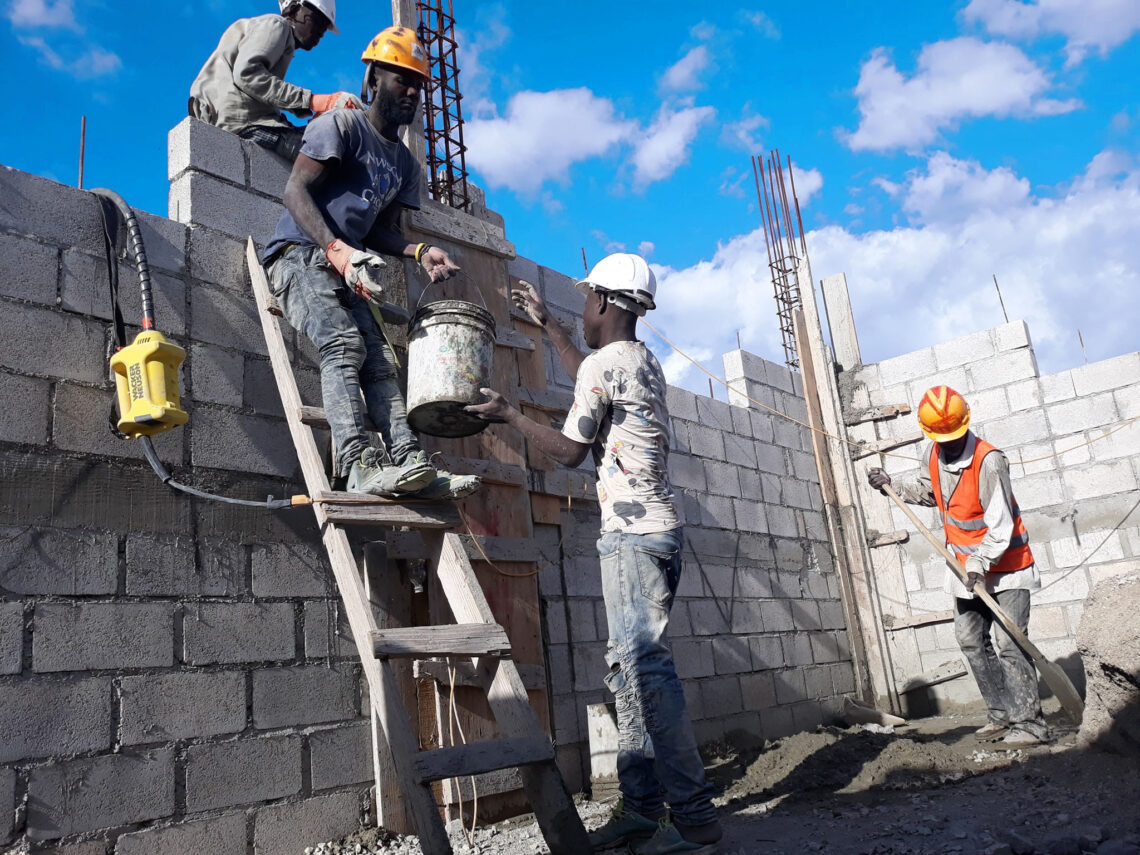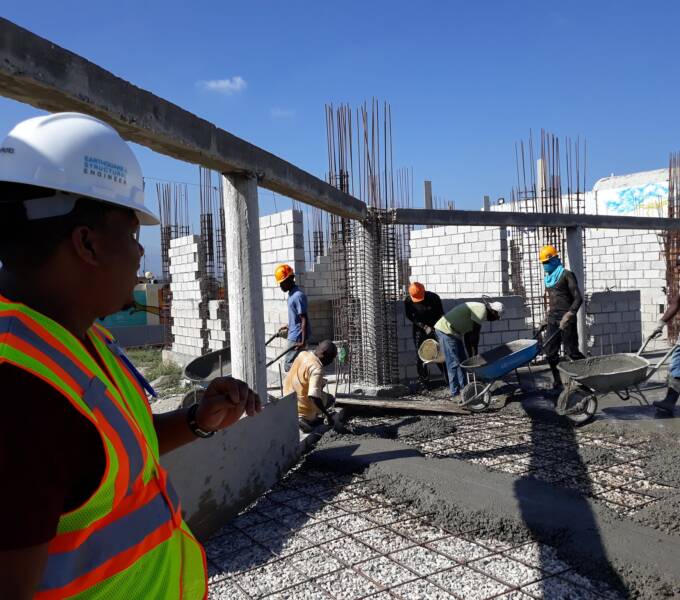By Olivia Nielsen, Lucienne Cross and Leila Kabalan
It’s time to put the role buildings play in climate change front and center. Though it is now well established that buildings account for over a third of the world’s energy use and carbon emissions, we must remind ourselves that resilience and sustainability must go hand-in-hand.
By the time a building is constructed, over a third of the total energy it will consume has already been used. This is due to high embodied carbon in construction materials, their transportation, and the intensive process of construction itself. Once construction is complete, the remaining carbon emissions are produced by the day-to-day operations—mainly heating and cooling. Thus, a focus on building “green” must also mean prioritizing the building’s longevity and ability to withstand increasing climate hazards to avoid the environmental burden of reconstruction.

As women working in the male-dominated field of infrastructure, we know that 90% of buildings that exist in developed countries today will still exist in 2050 when our children are grown. We have an obligation to incorporate the best predictions of what their world will look like into our designs—what types of disasters will they face and what infrastructure will keep them safe? New construction is inevitably environmentally destructive, yet less than 1% of all buildings are retrofitted each year. We must find strategies for sustainability that include regular monitoring throughout the building’s life cycle and making improvements when we have better data.
- Integrating resilience into existing and new structures: Buildings must be able to withstand ever more frequent disasters. With storms growing in intensity, we simply cannot afford to rebuild after every disaster. Instead, proper planning and construction must be applied early, and retrofits need to be implemented regularly to avoid damage to current buildings. A FEMA study showed that over a 20-year period, compliance with modern building codes could save cities and counties $32 billion in losses from natural disasters. New studies are beginning to show the staggering impact that post-disaster demolitions have on CO2 emissions. Without resilience, even the greenest building can become a major environmental and financial sink.
- Green and resilient retrofits can be cost efficient and inclusive: To meet the climate crisis, we must not only focus on energy efficient retrofits, but also on structural retrofits that can save both lives and properties in the case of a disaster. While developed countries like Mexico and Colombia have integrated retrofits into their national housing strategies, emerging countries also stand to benefit. Often the poorest households are the most vulnerable, but simple inexpensive retrofits, like wrapping walls in polypropylene bands, can save homes and essential businesses.
- Green financing, mortgages and financial incentives work: Green mortgages and subsidies intentionally encourage borrowers to buy environmentally-friendly buildings or retrofit existing buildings. For example, the Mivivienda Verde Bono, offered by Fondo Mimivienda (the largest provider of affordable housing financing in Peru), is a great example of prioritizing sustainability within affordable housing options. Tax incentives should also be part of the conversation, such as the 110% tax break offered by the Italian Government for expenses incurred from energy-saving and seismic retrofit measures.

The impact of buildings on the environment is clear and we no longer have a choice but to act on the solutions proven most successful. All new buildings should be built green and resilient to predicted disasters, while existing buildings should be retrofitted to protect both lives and economies.
Fortunately, new tools like the EDGE and BRI apps by the World Bank, or machine learning to identify homes at risk, are revolutionizing the sector by making information easily accessible to policymakers and developers. New construction technologies are also being deployed to bring down the costs of retrofits, making them accessible to all.
As our cities continue to expand, we hope that strategies for building resilience are considered hand-in-hand with building sustainably. Our children will inherit our cities- let’s make sure that they are built to last!


